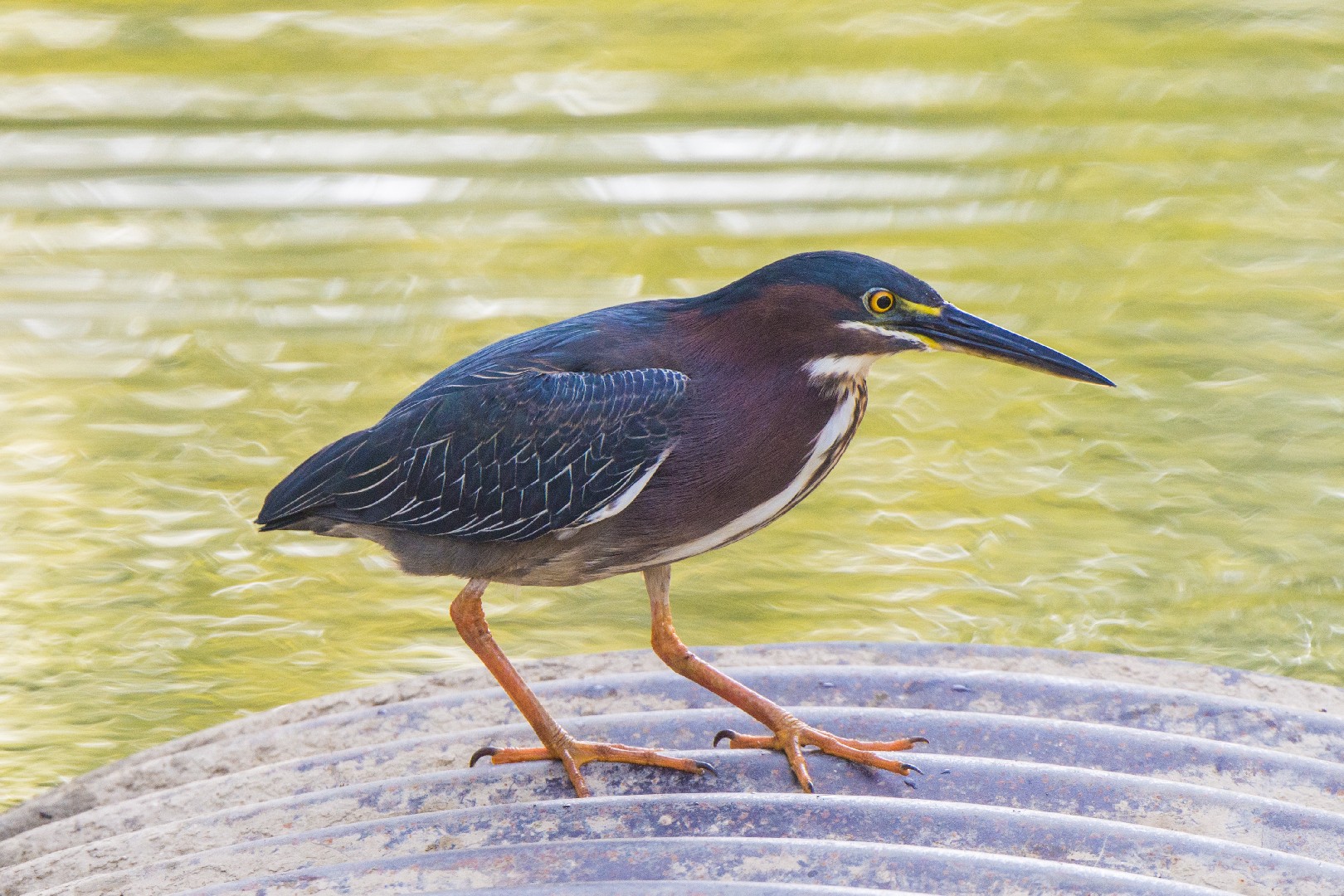Green Heron
A species of Green-backed herons, Also known as Little Green Heron Scientific name : Butorides virescens Genus : Green-backed herons
Green Heron, A species of Green-backed herons
Also known as:
Little Green Heron
Botanical name: Butorides virescens
Genus: Green-backed herons
Content
Description People often ask General Info
Description
The green Heron is a shorter member of the long-legged heron family. This solitary bird can be tough to spot, for it grows nervous if out in the open and prefers to be tucked away safely. In fact, if you spot one out in the open, you’ll likely notice it flicking its tail and lifting and dropping its crest. If the green Heron becomes frightened, it typically responds with a squawk and then defecating behind itself as it flees.
Size
46 - 56 cm
Life Expectancy
8 years
Nest Placement
Tree
Clutch Size
3 - 5 eggs
Incubation Period
1 - 2 broods
Number of Broods
19 - 21 days
Nestling Period
16 - 17 days
Feeding Habits
Green Heron predominantly consume small fish and also feed on a variety of insects, crustaceans, amphibians, and small mammals. They prefer hunting in shallow waters, employing a stand-and-wait approach or walking slowly to capture prey with a swift lunge of their heavy bill.
Habitat
Green Heron inhabits wetlands such as lakes, marshes, and riverbanks in temperate to tropical regions. This bird seeks areas rich in trees and shrubs for nesting, often near low-altitude water sources. During breeding, it may adapt to wooded areas if water is available. In winter, green Heron moves to southern coastal zones and mangrove swamps in Central America.
Nest Behavior
Males initiate nest building and later delegate most construction to the female. Green Heron continually add sticks during breeding season. They participate in egg-laying soon after nest completion, with care for eggs and chicks shared by both parents.
Nest Characteristics
Green Heron typically chooses secluded sites in or near water for nesting, favoring trees or bushes with sheltering foliage. Nest locations vary from ground level up to 30 feet high. The construction is a platform made of long, thin sticks, around 8-12 inches across, with a shallow depression, and is often unlined or repurposed from old nests.
Dite type
Piscivorous
People often ask
General Info
Feeding Habits
Bird food type
Bird Feeder Type

Platform
Sounds
Call
Recording location: Costa Rica
Call
Recording location: Panama
Call
Recording location: United States
Behavior
Green Heron exhibit a range of distinct behaviors, particularly during the breeding season when engaging in intricate courtship rituals, often characterized by neck stretching, bill snapping, and loud calls. They demonstrate a preference for solitary nesting or sometimes associate with colonies of their species or others. Vigilantly defensive of their breeding territories, they protect against predators such as crows, grackles, snakes, and raccoons. Parental roles are shared between males and females in brooding and feeding the offspring, which remain dependent even after nest departure, acquiring foraging skills under their guidance. Green Heron's territorial nature extends to feeding grounds, where they actively repel intruding species, ensuring exclusive access to resources.
Scientific Classification
Phylum
Chordates Class
Birds Order
Pelicans and Relatives Family
Herons Genus
Green-backed herons Species
Green Heron 